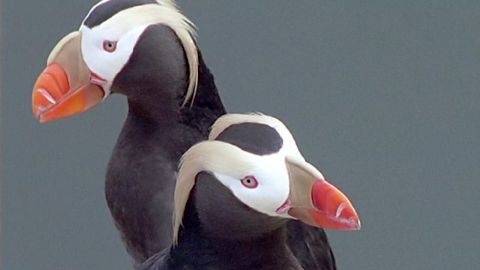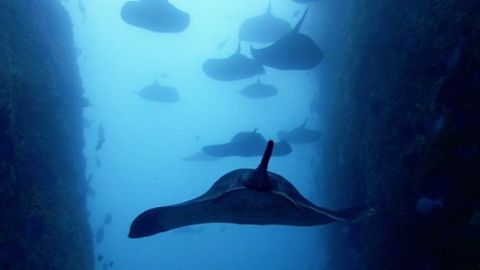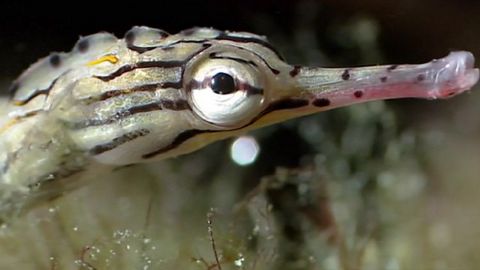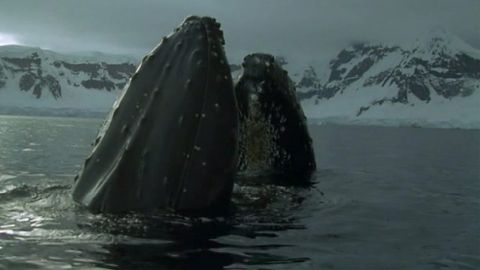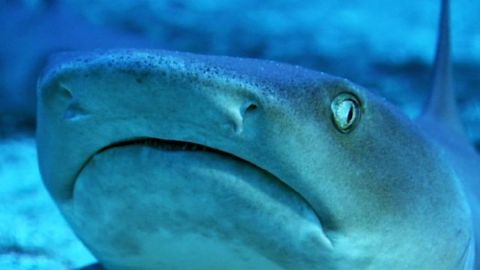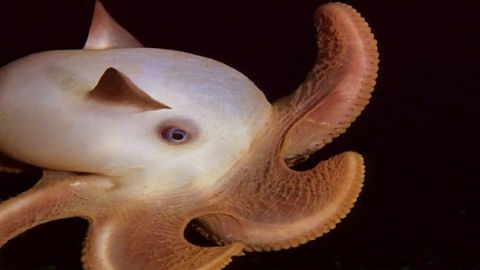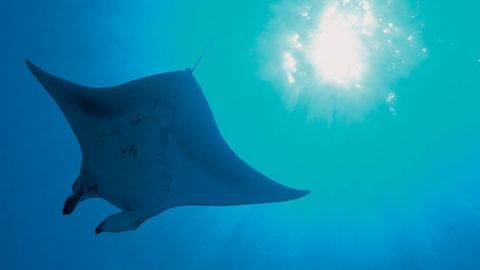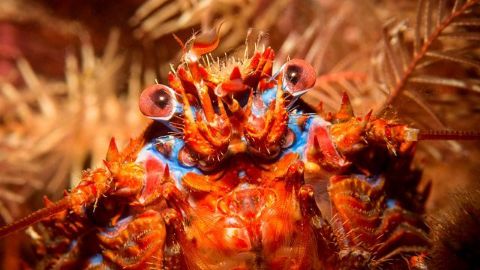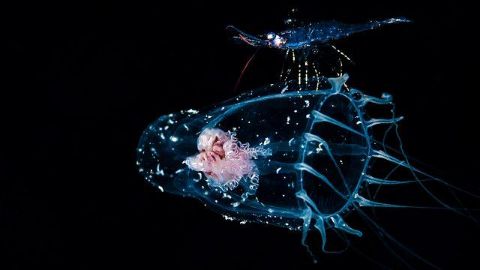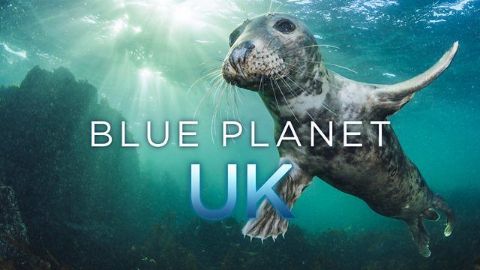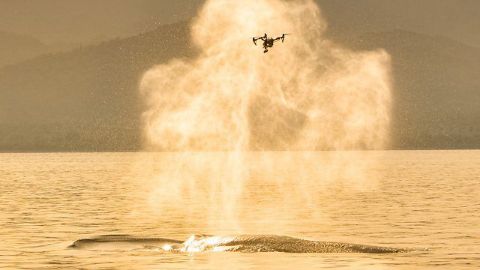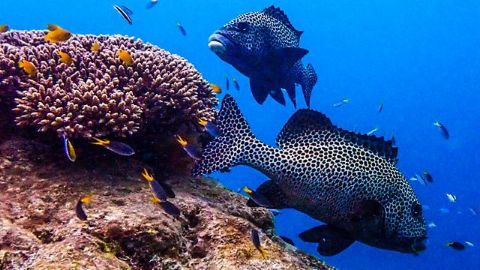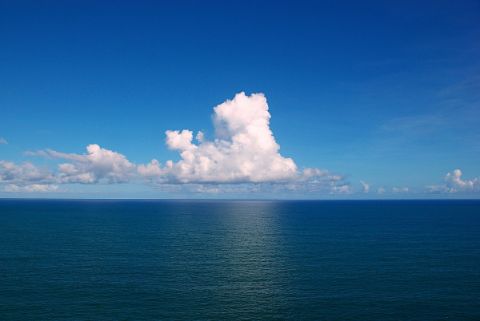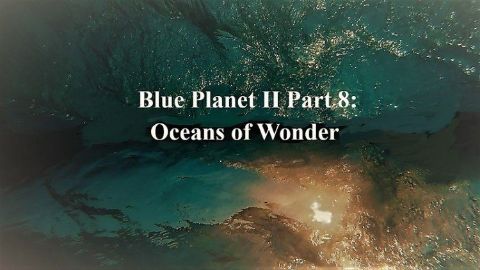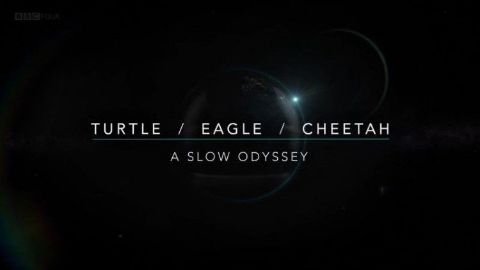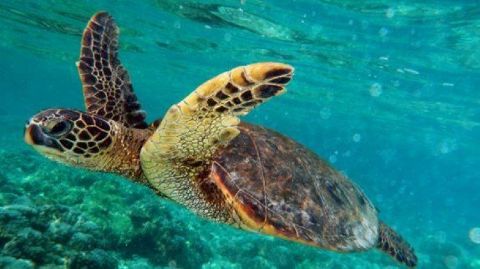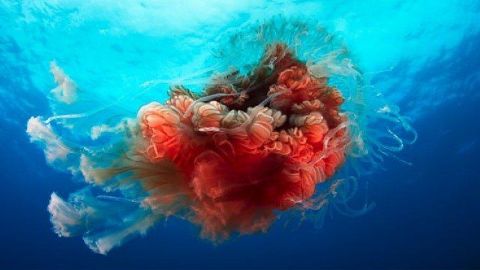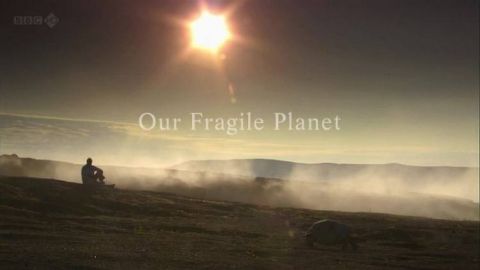blue planet (45 videos) • 45 videos
The wildlife inhabiting the world's oceans, from the shallow seas of the tropics, where predators like the lionfish can become the prey to one of the world's oddest hunters, to the greatest depths, where a massive siphonophore, longer than a blue whale, and a gulper eel with huge jaws are captured on film using specialised vessels designed to withstand the pressure. The episode also features the mating dances of mobula rays and the symbiotic relationship between Columbus crabs and turtles.
Planet Earth III • 2023 • Nature
In this episode, Chris Packham tells the almost implausible story of how our world went from a barren rock with a sky of endless black, to the planet we know today, cloaked in the thin blue line of our life-sustaining atmosphere. When Earth first formed from clouds of dust and gas 4.6 billion years ago, it was - like so many other lifeless worlds in the universe - devoid of an atmosphere, an inhospitable rock floating in the black void of space. But as the young planet was pummelled by asteroids a period of extraordinary upheaval began. Over a two-billion-year period, the planet faced violent eruptions and a toxic orange haze, vast oceans of water in the sky and seas turning rusty red. Eventually, with the emergence of life and photosynthesis recalibrating the gases in our atmosphere, the stage was set for Earth to become the vibrant azure-skied planet we call home today.
Earth: One Planet, Many Lives • 2023 • Nature
The wildlife of Antarctica, from king penguins that must evade leopard seals to feed at sea to albatrosses responding to diminishing number of females in their population, as well as rare footage of the Antarctic blue whale, the largest animal to have ever lived. As the programme ventures into the heart of the continent, surprising footage reveals one of the most volcanic regions on Earth, with unexpected sand dunes hidden in a rare ice-free valley.
Frozen Planet II narrated by Sir David Attenborough • 2022 • Nature
Dr Martha Holmes looks at man's influence on the oceans. Is there a solution so that we can save our seas or is it too late to get us out of Deep Trouble?
Blue Planet I • 2001 • Nature
Revealing the titanic efforts behind Blue Planet, this diary reveals the skills and dedication of the film makers.
Blue Planet I • 2001 • Nature
David Attenborough narrates a natural history of the oceans, examining how animals from in and around the sea use the constantly changing coastal areas.
Blue Planet I • 2001 • Nature
As snails surf the waves in pursuit of a meal, how do the tides create opportunities for marine life?
Blue Planet I • 2001 • Nature
Developed over centuries, coral reefs house fragile ecosystems, but they too have to fight to survive.
Blue Planet I • 2001 • Nature
David Attenborough narrates a natural history of the oceans, exploring the richest waters on Earth, where the annual cycle of the sun drives an explosion of life.
Blue Planet I • 2001 • Nature
A look at the survival techniques of creatures that endure the harsh conditions of the Arctic and Antarctic.
Blue Planet I • 2001 • Nature
David Attenborough narrates a natural history of the oceans. The deadly game of hide-and-seek played by the sea's charismatic hunters - whales, shark and billfish.
Blue Planet I • 2001 • Nature
David Attenborough narrates a natural history of the oceans to uncover the strange, otherworldly creatures living in the depths of the ocean.
Blue Planet I • 2001 • Nature
The ocean's influence dominates the world's weather systems and supports an enormous range of life. This first episode demonstrates the sheer scale, power and complexity of the "Blue Planet".
Blue Planet I • 2001 • Nature
Professor Brian Cox continues his tour of the solar system revealing that it was once home to not one, but two blue planets.
The Planets 2019 • 2019 • Astronomy
Delving beneath the surface of the Earth's oceans to uncover a world of extraordinary extremes, including crushing depths, stormy coasts, vast blue deserts, and crowded reefs; how seals fend off sharks; how orcas fight to survive.
Hostile Planet • 2019 • Nature
The final programme comes from St Abbs in Scotland and looks at whether herring are making a comeback, and there's exploration into the lesser-known British coral reefs.
Blue Planet UK • 2019 • Nature
Steve finds out how washing our clothes is harming our marine life. Why has the fish and chips supper changed? And which lobster is making a comeback? Plus why is one man fascinated by 'the Christmas Tree fish of the sea? Chris finds out. Presented from Herne Bay in Kent .
Blue Planet UK • 2019 • Nature
In Herne Bay in Kent, Steve makes a jaw-dropping discovery of sharks teeth on the beach. Looking at how bad fatbergs are for the arteries of our seas. Plus we soar high over Mull with Sea eagles, and Chris meets a photographer who believes we have the best marine life in the world.
Blue Planet UK • 2019 • Nature
Steve uncovers the historic secrets of seabirds in Yorkshire, Gillian finds out how we're stressing our sea creatures, and Chris meets a retired couple adding to shark science.
Blue Planet UK • 2019 • Nature
From St Abbs in Scotland, Steve reveals how ocean plastic rubbish is turned into kayaks that clean up our seas, Gillian goes oyster fishing in Cornwall and Chris meets author Philip Hoare who thinks we should all take a daily dip in the sea.
Blue Planet UK • 2019 • Nature
In the final programme of this week-long ocean health check, we find out what the future holds for the next generation of marine life and how we can help.
Blue Planet Live • 2019 • Nature
As marine life around the world embarks on epic journeys across the planet’s oceans, we discover how ocean traffic, over-fishing and noise pollution could have an impact.
Blue Planet Live • 2019 • Nature
In a race to find out what great pressures confront life in our ocean, the team continue their mission to investigate the effect human impact has had on our marine ecosystem.
Blue Planet Live • 2019 • Nature
Chris Packham, Liz Bonnin and Steve Backshall explore our oceans and its wildlife, to find out how marine life is coping in the face of increasing environmental pressure.
Blue Planet Live • 2019 • Nature
If you think the Earth takes millions of years to change, it’s time to think again! Presented by Hannah Fry, this TV special reveals how much our planet can change in just 24 hours. A new era of science allows us to watch as the Earth moves, breathes, shrinks and grows right under our noses. The story is driven by scientists and explorers, and harnesses cutting-edge data, newly launched satellites and blue chip CGI to show us the true personality of the Earth… more dynamic than it’s ever been seen before.
2018 • Astronomy
This extended special of the nature documentary series journeys from the equator to the unexplored depths, meeting the best-loved characters from the series.
Blue Planet II • 2018 • Nature
Riding onboard with a cheetah, a green turtle and a white-tailed sea eagle as they show us around their respective homes. With natural sounds and elegant embedded graphics delivering information, this is an immersive journey into their world like no other. Each section rides onboard with one of the animals as it shows us around its world. Revealing how they go through their daily routines, journey across different parts of their homes and introduce us to the other animals they share them with, in this extraordinary immersive show. A trio of cheetahs hunting on the Namibian bushveld, a green turtle cruising the reefs of Indonesia and a white-tailed sea eagle as it soars above the west coast of Scotland. All the animals are part of ongoing scientific studies or research projects, they are habituated or trained to carry small, lightweight cameras capable of capturing images in high definition. With often bespoke technology developed and pioneered by research scientists and the teams from Blue Planet II and forthcoming series Animals With Cameras. This is the core of this immersive BBC Four series that reveals the natural world through the perspective of its subjects, and has afforded the scientific community an even deeper understanding of their subjects.
2017 • Nature
Blue Planet II explores parts of the ocean that nobody has ever visited, encountered extraordinary animals, and discovered new insights into life beneath the waves. In Our Blue Planet, Sir David Attenborough examines the impact of human life on life in the ocean. In this final episode, we uncover the impact that our modern lives are having on our best-loved characters from across the series, including devoted albatross parents unwittingly feeding their chicks discarded plastic and mother dolphins potentially exposing their newborn calves to pollutants through their contaminated milk. Scientists have even discovered that increasing noise levels may stop baby clownfish finding their way home.
Blue Planet II • 2017 • Nature
At the coast, two worlds collide. Coasts is the story of how our Blue Planet’s wildlife survives in this ever changing world. It’s a roller-coaster ride of heart stopping action and epic drama, with characters from beautiful to bizarre. This episode is a rollercoaster ride of heart-stopping action and epic drama, peopled with characters from the beautiful to the bizarre. We meet fish that live on dry land and puffins that must travel 60 miles or more for a single meal, and witness a life-and-death struggle in a technicolour rock pool.
Blue Planet II • 2017 • Nature
Footage of wildlife inhabiting underwater kelp forests, including thousands of giant cuttlefish spawning along a restricted area of rocky reef off the south coast of Australia. Males outnumber females 11 to one, which leads to fierce competition. Larger males use brute force to drive off competition, while their smaller rivals use deception by mimicking the appearance of females. The programme also features tiger sharks hunting for green turtles in fields of seagrass and spider crabs trying to avoid predators while they shed their shells.
Blue Planet II • 2017 • Nature
The big blue is the world's greatest wilderness, far from shore and many kilometres deep. It's a vast marine desert where there is little to eat and nowhere to hide. Yet it's home to some of the biggest and most spectacular creatures on earth. This episode reveals what it takes to survive in this savage and forbidding world. We witness feats of incredible endurance, moments of high drama and extraordinary acts of heart-wrenching self-sacrifice. Every animal in the big blue must find their own unique way to survive.
Blue Planet II • 2017 • Nature
Coral reefs are home to a quarter of all marine species. Survival in these undersea mega-cities is a challenge with many different solutions. A turtle heads to the reef's equivalent of a health spa - but she must use trickery to avoid the queue. A remarkable Grouper uses the fish equivalent of sign language to collaborate with an octopus, flushing their prey out of hiding holes. A metre-long, ferocious-jawed Bobbit Worm hides in its tunnel. Monocle Bream retaliate by squirting water to expose its sandy lair.
Blue Planet II • 2017 • Nature
The deep is perhaps the most hostile environment on earth, at least to us - a world of crushing pressure, brutal cold and utter darkness. We have barely begun to explore it, and yet it is the largest living space on the planet. Scientists already think that there is more life in the deep than anywhere else on earth. This episode takes us on an epic journey into the unknown, a realm that feels almost like science fiction. We discover alien worlds, bizarre creatures and extraordinary new behaviours never seen before. We encounter savage hordes of Humboldt squid hunting lanternfish in the depths and coral gardens flourishing in absolute darkness, with more species of coral to be found in the deep than on shallow tropical reefs.. Narrated by David Attenborough,
Blue Planet II • 2017 • Nature
In recent years, our knowledge of life beneath the waves has been transformed. Using cutting-edge technology, One Ocean takes us on a journey from the intense heat of the tropics to our planet's frozen poles to reveal new worlds and extraordinary never-before-seen animal behaviours.
Blue Planet II • 2017 • Nature
In 1972, the crew of Apollo 17 captured the iconic 'Blue Marble': the first photograph ever taken by an astronaut of the entire Earth. This photo had a profound effect on our perception of ourselves. Since then, Nasa has taken millions more. In this epic, powerful and revelatory documentary, a new generation of astronauts, including Tim Peake, use those images of the Earth from space to reveal the astonishing transformation humanity has wrought in the 45 years since 'Blue Marble'. Together, the astronauts provide an armchair tour of the change they've witnessed from orbit, as humankind etches our presence on the planet. Using stunning time-lapse sequences, the programme reveals how we are reshaping our world, for better and for worse: from the sprawling megacities of China to vast desert farms in the Middle East and from the melting snowcap of Kilimanjaro to giant solar arrays in Nevada.
2017 • Astronomy
In the final film, he reflects on the dramatic impact that humankind has had on the natural world within his own lifetime. He tells the surprising and deeply personal story of the changes he has seen, of the pioneering conservationists with who he has worked - and of the global revolution in attitudes towards nature that has taken place within the last six decades. In a journey that takes him from the London Zoo to the jungles of Borneo, Attenborough reveals what inspired him to become a conservationist. He remembers classic encounters with mountain gorillas, blue whales and the giant tortoise, Lonesome George. These are all characters that have helped to change public attitudes to the natural world.
Attenborough: 60 Years in the Wild • 2012 • Nature
David Attenborough reviews the scientific discoveries that have transformed our view of life on earth during his lifetime. How and where did life first begin? How do continents move? How do animals communicate? And why do they behave the way they do? Sir Attenborough shares his memories of the scientists and the breakthroughs that helped shape his own career. He also recalls some of his most memorable attempts to bring new science to a television audience - by standing in the shadow of an erupting volcano as lumps of hot lava crashed around him, by being charged by a group of armed New Guinean tribesmen and the extraordinary sight of chimps hunting monkeys, captured on camera for the first time by Attenborough and his team.
Attenborough: 60 Years in the Wild • 2012 • Nature
Sir David Attenborough gives his unique perspective on over half a century of innovation in wildlife filmmaking. He revisits key places and events in his filming career, reminisces with his old photos and reflects on memorable wildlife footage - including him catching a komodo dragon and swimming with dolphins. Returning to his old haunts in Borneo he recalls the challenges of filming in a bat cave and shows how with modern technology we can now see in the dark.
Attenborough: 60 Years in the Wild • 2012 • Nature
In this episode, Professor Brian Cox shows how Earth's basic ingredients, like the pure sulphur mined in the heart of a deadly volcano in Indonesia, have become the building blocks of life. Hidden deep in a cave in the Dominican Republic lies a magical world created by the same property of water that makes it essential to life. Clinging to a precipitous dam wall in Italy, baby mountain goats seek out Earth's chemical elements essential to their survival. In the middle of the night in a bay off Japan, Brian explains how the dazzling display of thousands of glowing squid shows how life has taken Earth's chemistry and turned it into the chemistry of life.
Forces of Nature With Brian Cox • 2016 • Nature
Professor Brian Cox follows Earth's epic journey through space. He takes to the air in a top-secret fighter jet to race the spin of the planet and reverse the passage of the day. In Brazil, a monstrous wave that surges up the Amazon River provides an epic ride of a different kind - chased by a top surfer through the rainforest, this tidal wave marks Earth's constant dance with the Moon. Greenland experiences some of the biggest swings in seasons in the world, but despite the deep freeze, the harsh winter brings opportunity to the Inuit people who live there. All this spectacle here on Earth signals that we are thundering through the universe at breakneck speed. Brian explains why we can't feel it and how understanding motion brings us to understanding the nature of space and time itself, leading to the astonishing conclusion that the past, present and future all exist right now.
Forces of Nature With Brian Cox • 2016 • Nature
In this episode Brian uncovers how the stunning diversity of shapes in the natural world are shadows of the rules that govern the universe. In Spain he shows how an attempt by hundreds of people to build the highest human tower reveals the force that shapes our planet. In Nepal, honey hunters seek out giant beehives that cling to cliff walls. The perfect hexagonal honeycombs made by the bees to store their honey conceal a mathematical rule. Off the coast of Canada, Brian explains how some of the most irregular, dangerous shapes in nature - massive icebergs that surge down from Greenland and into shipping lanes of the Atlantic - emerge from a powerful yet infinitely small force of nature. Even the most delicate six-sided snowflake tells a story of the forces of nature that forged it.
Forces of Nature With Brian Cox • 2016 • Nature
Set to the words of Carl Sagan, Pale Blue Dot is an animation that situates human history against the tapestry of the cosmos. Using a eclectic combination of art styles woven seamlessly together through music and visuals, the animation seeks to remind us that regardless of our differences, we are one species living together on the planet we call Earth.
2015 • Astronomy
Documentary about how humans exploit the sea's riches with great ingenuity and bravery.
Professor Brian Cox takes a flight to the top of earth's atmosphere, where he sees the darkness of space above and the thin blue line of our atmosphere below. Against the stunning backdrop of the glaciers of Alaska, Brian reveals his fourth wonder: Saturn's moon Titan, shrouded by a murky, thick atmosphere.
On the 40th anniversary of the famous ‘Blue Marble’ photograph taken of Earth from space, Planetary Collective presents a short film documenting astronauts’ life-changing stories of seeing the Earth from the outside – a perspective-altering experience often described as the Overview Effect.
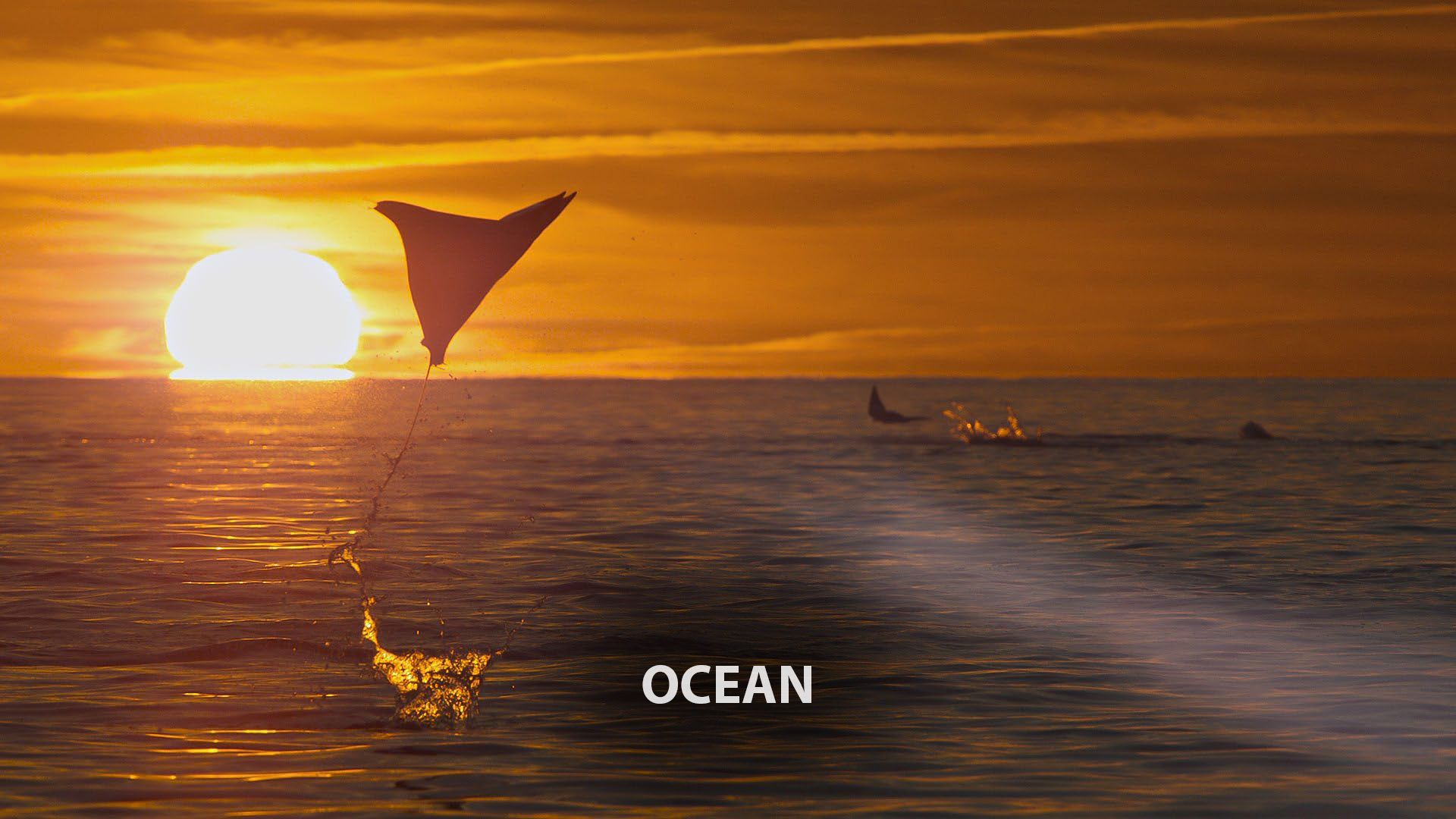
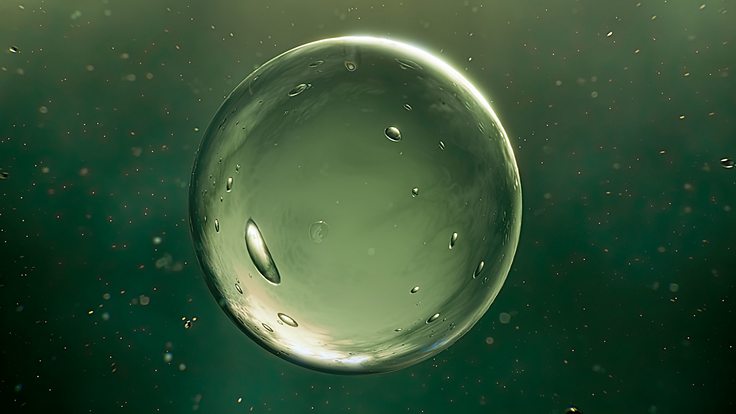
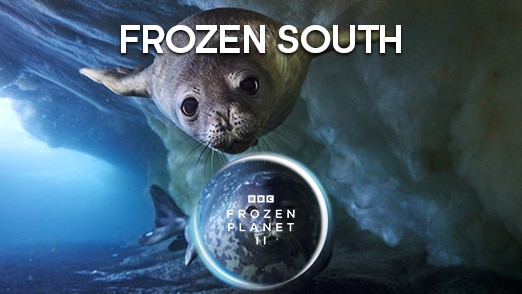
![Deep Trouble [Extra]](https://ihavenotv.com/img/12215.jpg)
![Making Waves [Making of]](https://ihavenotv.com/img/12214.jpg)
